Ahmed Megahd
Streaming AI Responses in Real-Time with SSE in Next.js & NestJS
#1about 4 minutes
Why streaming AI responses improves user experience
Streaming AI text token-by-token significantly improves user retention and engagement compared to showing a loading screen.
#2about 2 minutes
Comparing SSE, WebSockets, and polling for real-time data
Server-Sent Events (SSE) offer a lightweight, unidirectional alternative to WebSockets for pushing data, consuming half the memory per connection.
#3about 4 minutes
A full-stack architecture for streaming AI responses
The frontend uses the browser's EventSource API to subscribe to a NestJS backend endpoint that streams data from an AI provider.
#4about 2 minutes
Implementing an SSE endpoint in NestJS for AI streaming
Set the `text/event-stream` content type and use a loop to push data chunks received from the OpenAI or Gemini streaming API to the client.
#5about 2 minutes
Consuming SSE streams in Next.js with EventSource
Use the native `EventSource` object to connect to the streaming endpoint and append incoming data to the component's state for a typewriter effect.
#6about 5 minutes
Using SSE for notifications and real-time file sharing
A code demonstration shows how to manage multiple client connections and push different event types, such as notifications or file data, to all subscribers.
#7about 2 minutes
Preparing an SSE implementation for production environments
Ensure reliability in production by adding authentication guards, rate limiting, keep-alive messages, and configuring proxy buffering in Nginx.
#8about 2 minutes
Scaling SSE applications for thousands of concurrent users
For large-scale applications, progress from a simple load balancer to using Redis Streams for message queuing or a dedicated SSE hub infrastructure.
#9about 2 minutes
Comparing AI providers for optimal streaming performance
AI providers like Groq, Gemini, and OpenAI differ in their streaming approach, offering either token-by-token or chunk-by-chunk responses which impacts perceived speed.
#10about 3 minutes
Syncing data from ChatGPT to multiple client applications
A custom GPT action can trigger a backend process that uses SSE to push new data in real-time to a user's browser extension, desktop, and mobile apps simultaneously.
#11about 1 minute
Understanding SSE limitations and its key benefits
Use SSE for unidirectional server-to-client data push, but choose other protocols like WebRTC for video or gRPC for microservices, to leverage its benefits of low latency and better user trust.
Related jobs
Jobs that call for the skills explored in this talk.
Matching moments

28:56 MIN
Why SSE is relevant again because of OpenAI
Leveraging Server-Sent Events (SSE) for Efficient Data Streaming in UI Development

41:21 MIN
Q&A on SSE implementation and best practices
Leveraging Server-Sent Events (SSE) for Efficient Data Streaming in UI Development
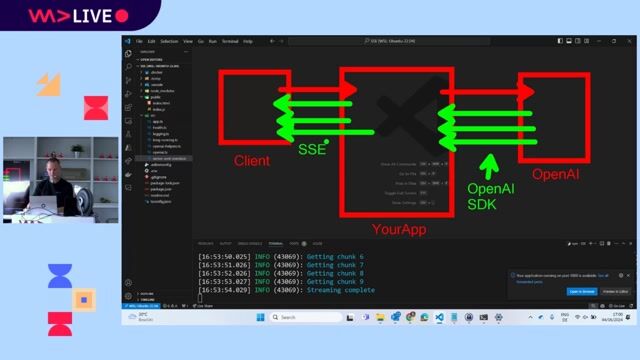
35:40 MIN
Building a streaming client for the OpenAI API
Leveraging Server-Sent Events (SSE) for Efficient Data Streaming in UI Development
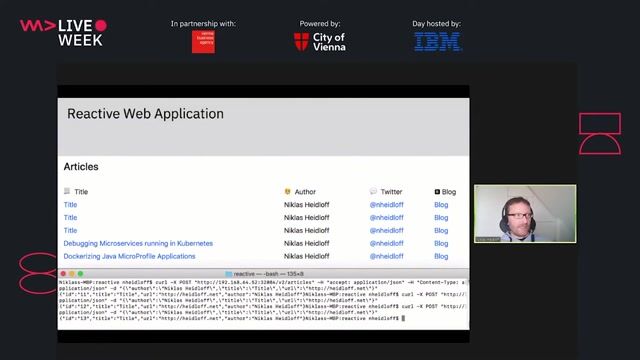
25:37 MIN
Streaming data to web clients with SSE
Development of reactive applications with Quarkus
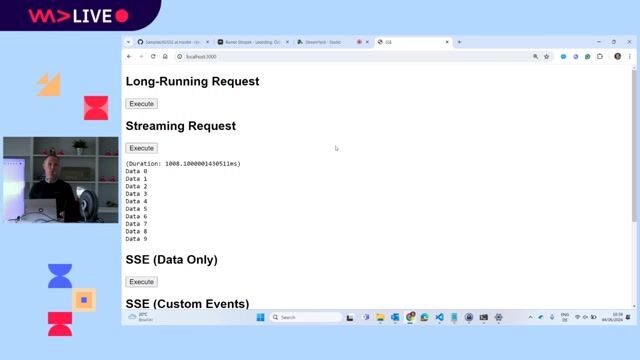
13:25 MIN
Introducing the Server-Sent Events protocol
Leveraging Server-Sent Events (SSE) for Efficient Data Streaming in UI Development
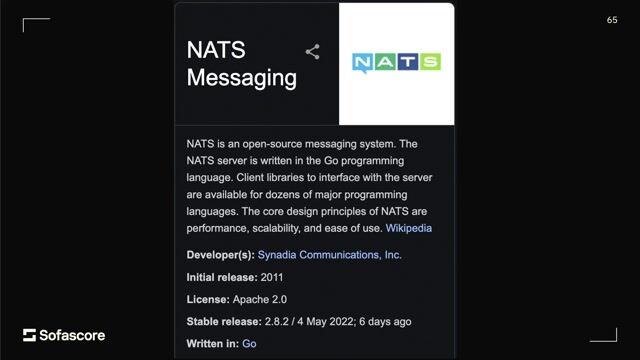
22:33 MIN
Implementing real-time updates with NATS messaging
Scaling: from 0 to 20 million users

33:55 MIN
Audience Q&A on practical micro-frontend challenges
Micro-frontends anti-patterns

25:14 MIN
Q&A on SSR, caching, and accessibility
Reducing the carbon footprint of your website
Featured Partners
Related Videos
 53:45
53:45Leveraging Server-Sent Events (SSE) for Efficient Data Streaming in UI Development
Rainer Stropek
 25:47
25:47Performant Architecture for a Fast Gen AI User Experience
Nathaniel Okenwa
 49:57
49:57Uncharted Territories of Web Performance - Andrew Burnett-Thompson and David Burleigh
Andrew Burnett-Thompson & David Burleigh
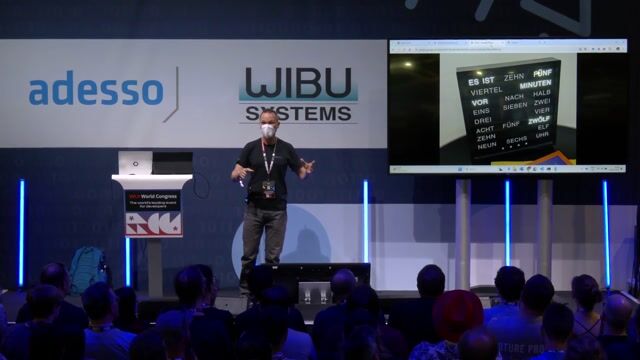 31:39
31:39Livecoding with AI
Rainer Stropek
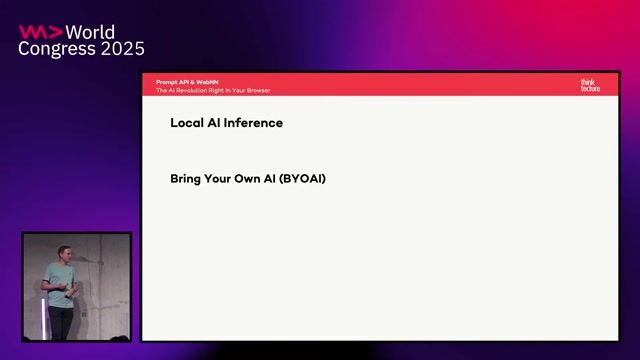 30:36
30:36Prompt API & WebNN: The AI Revolution Right in Your Browser
Christian Liebel
 42:10
42:10How Gatsby Cloud's real-time streaming architecture drives <5 second builds
Kyle Mathews
 32:27
32:27Generative AI power on the web: making web apps smarter with WebGPU and WebNN
Christian Liebel
 33:51
33:51Exploring the Future of Web AI with Google
Thomas Steiner
From learning to earning
Jobs that call for the skills explored in this talk.


![Senior Software Engineer [TypeScript] (Prisma Postgres)](https://wearedevelopers.imgix.net/company/283ba9dbbab3649de02b9b49e6284fd9/cover/oKWz2s90Z218LE8pFthP.png?w=400&ar=3.55&fit=crop&crop=entropy&auto=compress,format)

Senior Software Engineer [TypeScript] (Prisma Postgres)
Prisma
Remote
Senior
Node.js
TypeScript
PostgreSQL


Senior Backend Engineer – AI Integration (m/w/x)
chatlyn GmbH
Vienna, Austria
Senior
JavaScript
AI-assisted coding tools
Back End Developer - New cutting edge AI product (Node.js)
MLR Associates
Charing Cross, United Kingdom
Intermediate
API
Redis
Python
NestJS
MongoDB
+4
Back End Developer - New cutting edge AI product (Node.js)
MLR Associates
Manor Park, United Kingdom
Intermediate
API
Redis
Python
NestJS
MongoDB
+4
NodeJS Software Engineer - Conversational AI
MANGO
Palau-solità i Plegamans, Spain
API
Azure
Redis
Node.js
Salesforce
+6
Full-Stack Engineer - AI Agentic Systems
autonomous-teaming
Potsdam, Germany
Remote
Linux
Redis
React
Python
+7

